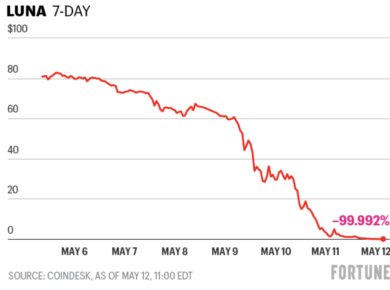Every year, most of us set financial goals as resolutions for the new year, but most people don’t end up achieving them. In fact, 94% of Singaporeans tend to set personal finance-related resolutions for the new year, but half of them (56%) end up overspending over the festive season! If that sounds like you, here’s how I meet (and even exceed) my financial goals each and every year, coupled with some actionable tips to help you make sure you don’t end up derailing your own financial plans, and instead, stay on track throughout the new year.
If you’ve been following my blog for the past few years, you would have seen me set clear financial goals for the new year each time, and then do a review at the end of the year to check if I’ve achieved them.
The good news is, I often do. But unfortunately for many others, this isn’t always the case.
Unsurprisingly, this shows up in Syfe’s latest survey findings as well:
Syfe just released their latest survey findings, and the results were unsurprising:
- 94% of people have personal finance-related resolutions for the new year
- 70% of people want to invest to grow their money in the new year
- 40% of people want to invest their annual bonus
- but yet, 56% of people spend more (or a lot more than usual) when it comes to the festive season consisting of Christmas, New Year and Chinese New Year
Clearly, a huge gap between intent and action exists. What’s more, online retailers, sales and our cultural festivities play a part in exacerbating our feelings of needing to spend…this makes it hard to resist, and if you’re someone with poor financial discipline, it is only too easy to fall into this trap of overspending (as much as you try justify every purchase).
Do the results describe you as well?
Of course, let’s get real and acknowledge that it is almost impossible NOT to spend during this period (unless you’re the Grinch, lol) but we should always remember the lesson from the movie, where Christmas is mainly about being together with family and friends, and not just gifts and fancy decorations. The same applies for New Year, and of course, while married folks cannot avoid spending on ang baos for the younger ones during Chinese New Year, you can still set a budget to give within your means.
For myself, I seldom overspend because I have (i) built up prudent spending habits from the past 20 years of my life, and (ii) set a budget.
Staying within that budget helps me to avoid the temptation from sales and advertisements everywhere around me. After all, it is the thought that matters, rather than the actual gift (or amount spent) itself.
If you allow the festive spending between these few months to derail your financial plans, it will be harder to achieve them for the rest of the year.
So if you want to make sure you succeed this time, start from reining in your festive spending first.
Syfe has invited me to give my own take on the 5 tips that came out of their collaboration with leading clinical psychologist Dr Annabelle Chow, and talk about how we can better use these to help achieve our own long-term financial goals. Dr. Chow has developed 5 easy and actionable tips for Syfe’s audiences to manage their own festive spending, while keeping in alignment with their personal financial resolutions this season. You can catch Dr Chow share the 5 tips in her webinar with Syfe here, but here’s my spin on a few key ones:
BB’s Tips to Manage Festive Spending
1. Remember your long-term goal(s)
Dr Chow suggests identifying your long-term values as the first step. If you’ve been following me, you should already have your own goals by now, so I will ask you to remember them instead, and keep your eye on the main prize.
Most of you have shared with me that your financial goals are to achieve financial freedom / retire early / invest for your kids’ financial security – or a combination of these goals. With the year end approaching, you should review what you’ve done in 2021 to move you one step closer to your goals.
For myself, I’ve definitely improved my investment skills and grown my portfolio size this year. And as for my kids, I’ve also since started Finn’s investment portfolio, and am managing it together with Nate’s.
2. Set a budget (or track your expenses)
I used to track every single expense in my 20s, but ever since I had kids, I’ve had difficulties keeping up, so I set an overall budget instead now and just aim to be conscious about all my spending in general.
You might think that tracking your expenses is a chore, but the truth is that it often shows you insights that you would otherwise not have known about. For instance, tracking my expenses in my younger days revealed that I tend to spend more when I’m busy (on taxis / food delivery) and whenever I skip meals (because I end up spending much more on snacks instead e.g. multiple items at Old Chang Kee vs. a proper lunch at the hawker centre).
With that knowledge, I’ve been able to cut down on such expenses thereafter. I haven’t ordered food delivery in ages, and consciously either cook a meal or walk out to order economic rice from the food court even on my busiest days.
3. Resist impulsive purchases
In this age of online advertising and e-commerce, it has become easier for us to just spend within seconds. While I love apps like Shopee as much as you guys do, it takes a great deal of discipline and self-restraint for me to not go overboard shopping on it!
Dr Chow advocates a S-T-O-P exercise to avoid buyer’s remorse:
- S – Stop whatever you are doing
- T – Take a breath and anchor yourself
- O – Observe and notice what’s happening inside and around you, notice the urge to purchase the item and acknowledge it
- P – Proceed effectively by reminding yourself of your priorities and whether this decision aligns with your values
The breathing techniques should help slow down your adrenaline rush that comes from seeing a good deal or a tempting offer. For myself, my approach to resisting impulsive purchases is this:
- Calculate the item’s utility cost
- Think about the lack of storage space in my house (this is a super effective method ok! It reminds me that I already have wayyyyyy too much)
- Walk away from the cashier and mull over the item for a bit. Often, this helps me to realize that I don’t really need it anyway, and the deal isn’t as good as it initially appeared to be. If I feel the price tag is expensive (anything more than a high 2 digits), I may even go off and come back to buy it later.
When I shop online, the same approach applies – I add them to my cart and just keep them there forever, until the day I decide I REALLY need it…which is when I then click on “check out”. Psst, for every 100 items I add to my online shopping cart on Shopee or Lazada, I often end up removing 80% of them!Once you’ve successfully made it to February without busting your budget, you can give yourself a pat on the back. But don’t stop there, as you also now need to work on achieving the rest of your financial goals!
How to make sure you achieve your 2022 financial resolutions
At the end of the day, keeping to your resolutions is really all about discipline, regular check-ins, and turning desirable behaviours into a habit.
Regular readers of the blog will be familiar with how I do a yearly review of my financial health (and 2021’s reflections will be out in the coming weeks, so keep a lookout for that!) and how it has helped me to ensure I stay on track towards my bigger goals.
Too often, another mistake that many people make is in making all sorts of plans and goals…but never end up taking action. Let’s be honest – how many of you are guilty of this?
When it comes to investing, this is exactly what happens. You tell yourself that you will start investing this year (or more this year), but then become so busy with work and life that you…forget. Or, you try to time the markets instead and always end up on the wrong end of the stick, or worse still, never buying at all.
If you want to spend less, try downloading an expense tracker and/or a budget app.
If you want to save more, try finding the best credit card to get discounts and rewards on your spending, and walk away from every impulsive purchase (you can always come back to buy it at a later time when your emotions are no longer running wild).
If you want to invest (or invest more), try adopting a dollar-cost averaging (DCA) strategy and start by putting in a bit every month towards your investments. If you’re new and not sure where to start, a robo-advisor like Syfe can help. You can start investing with any amount you want and there’s no lock-in period. To make it easier for you, you can even DCA your investments via recurring bank transfers with Syfe for a fuss-free start.
— A word on Syfe’s portfolios —
If you prefer to invest in fully-managed, ready-made portfolios, Syfe currently has the widest variety of portfolios for you to choose from. Their Core portfolios employ the time-tested core-satellite investing strategy, and allows you to match the one best suited to your risk appetite (Defensive, Balanced, or Growth, or Equity100).

Consisting of 18 ETFs across stocks, bonds and gold, this will likely appeal to those of you who prefer to have your funds diversified across different asset classes and managed by the world’s top names like Vanguard or Blackrock.
For those of you who are new, you can read about my breakdown of Syfe’s portfolios here to decide which is best for you:
—————————–
And if you want to up your investment knowledge instead, try reading more such as books (such as the ones I’ve recommended here) or subscribing to your favourite finance writers. Free webinars, such as those organised by Syfe, are also available to the public to attend and learn.
And finally, be sure to create a calendar appointment with yourself in 6 months time to review your progress, or sooner if you need it (e.g. a quarterly check-in could also work).
If you do these things, I’m pretty sure you’ll be well on track to achieve your goals.
Sponsored Message
Want a headstart on your 2022 financial goals? If you’re already a Syfe client, use either the code NYTOPUP or 5KTOPUP to enjoy free investing in the new year when you add funds to your Syfe portfolio. See the full T&Cs here.
New to Syfe? Save on 6 months worth of fees on investments up to $30,000 when you use the code BUDGETBABE.

Disclosure: This post is sponsored by Syfe, a leading robo-advisor in Singapore which I am a paying customer of. Any reference to an investment’s past or potential performance is not an indication of any specific outcome or profit. Always do your own research before investing. This is not financial advice. This advertisement has not been reviewed by the Monetary Authority of Singapore.






